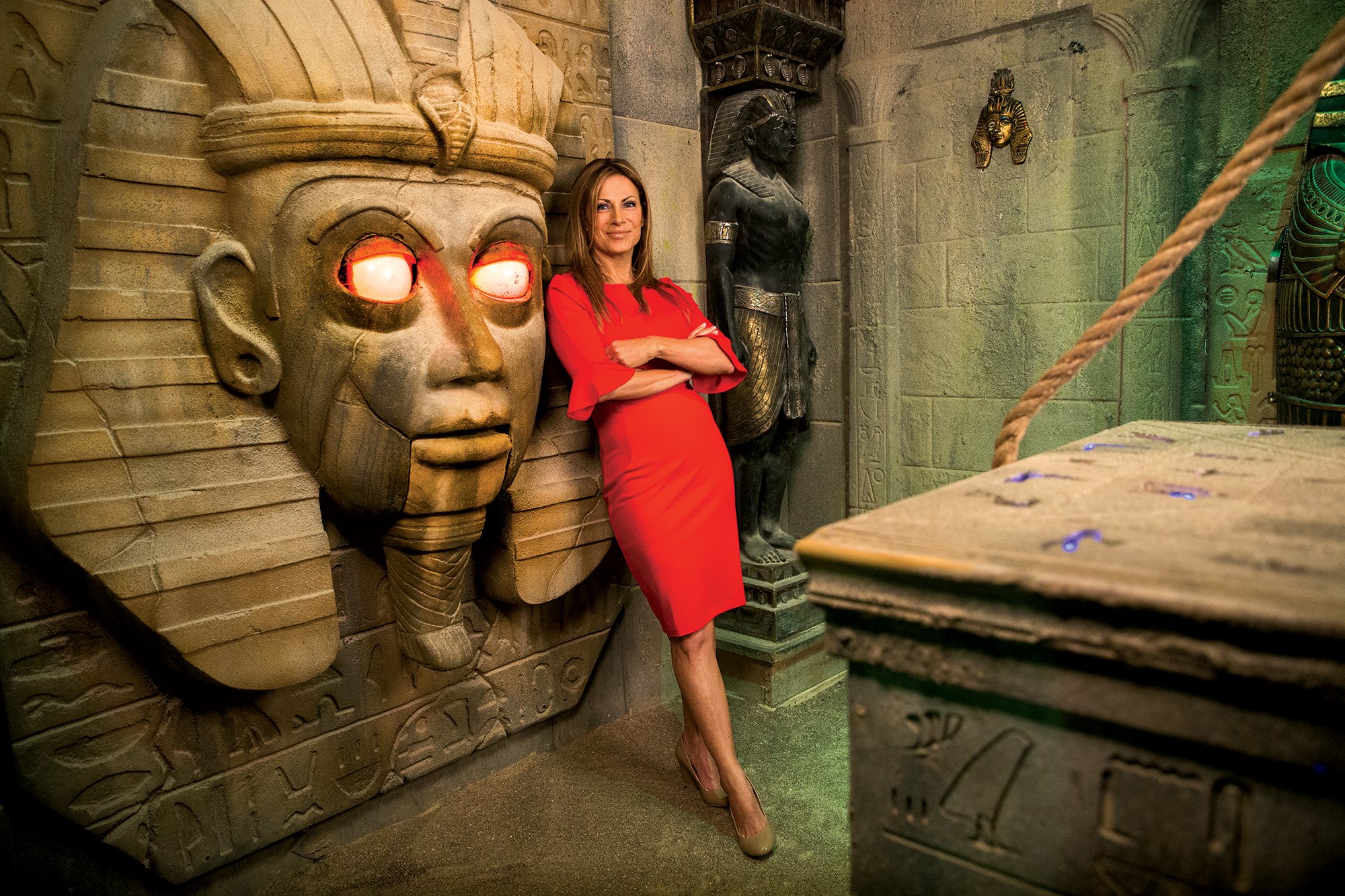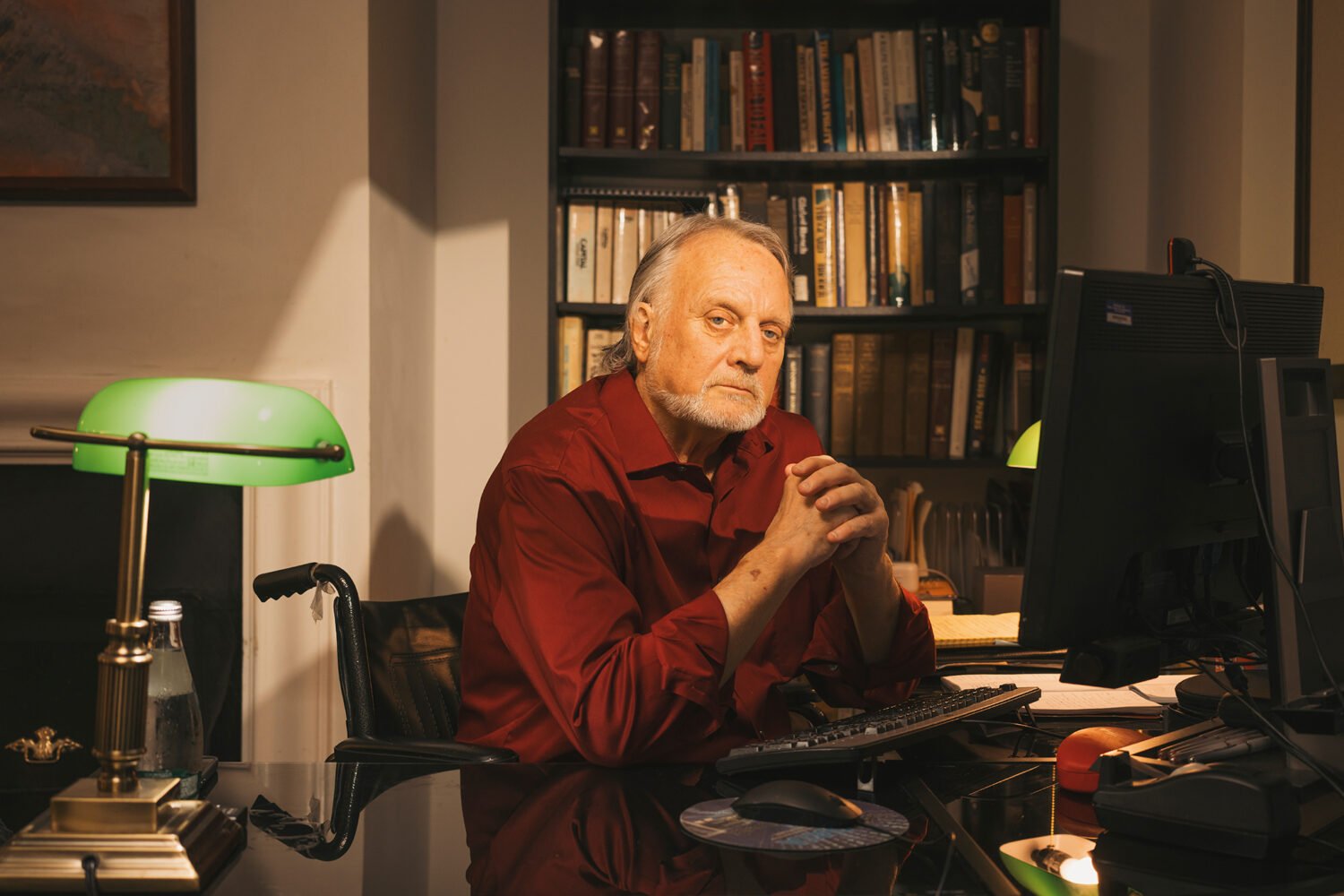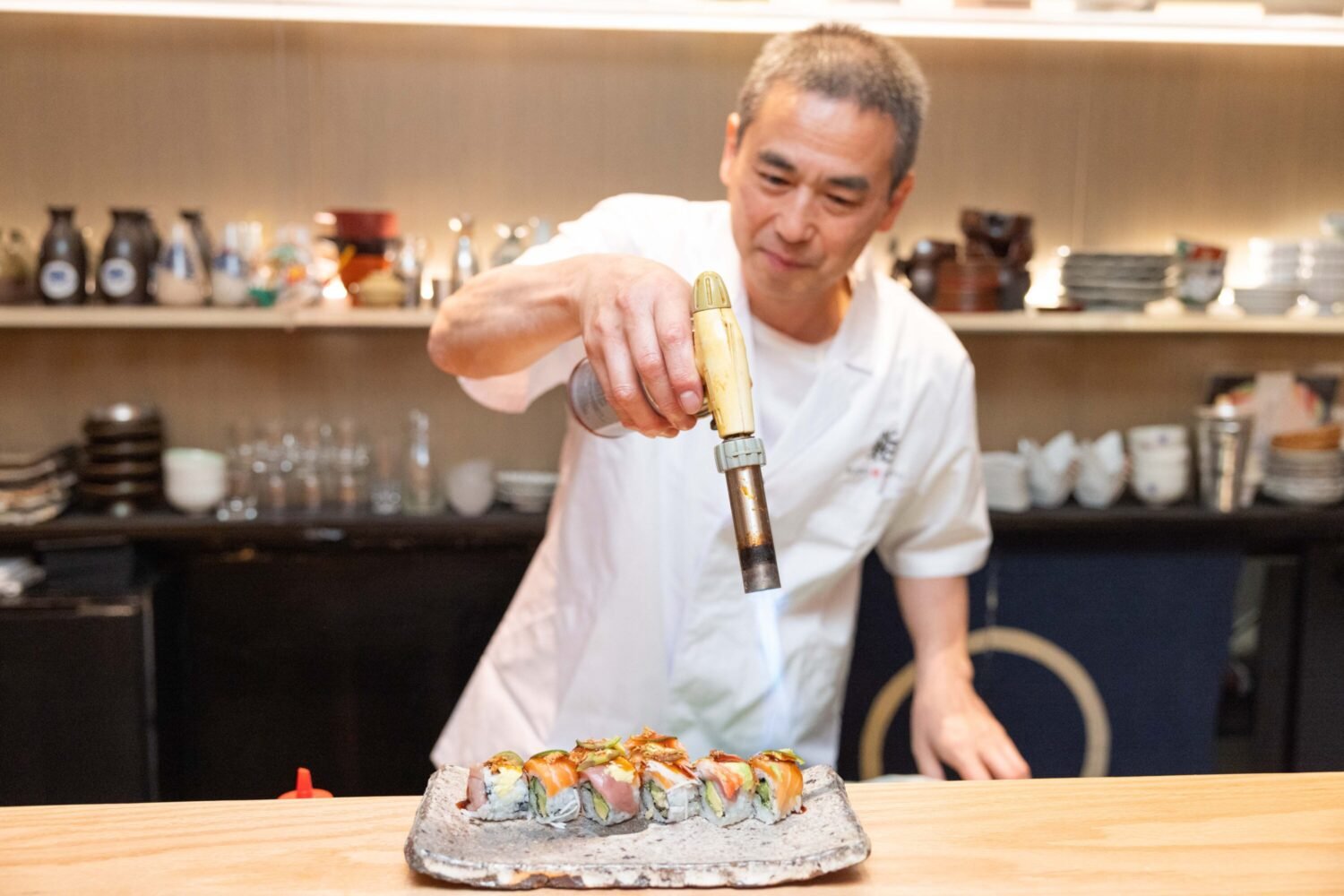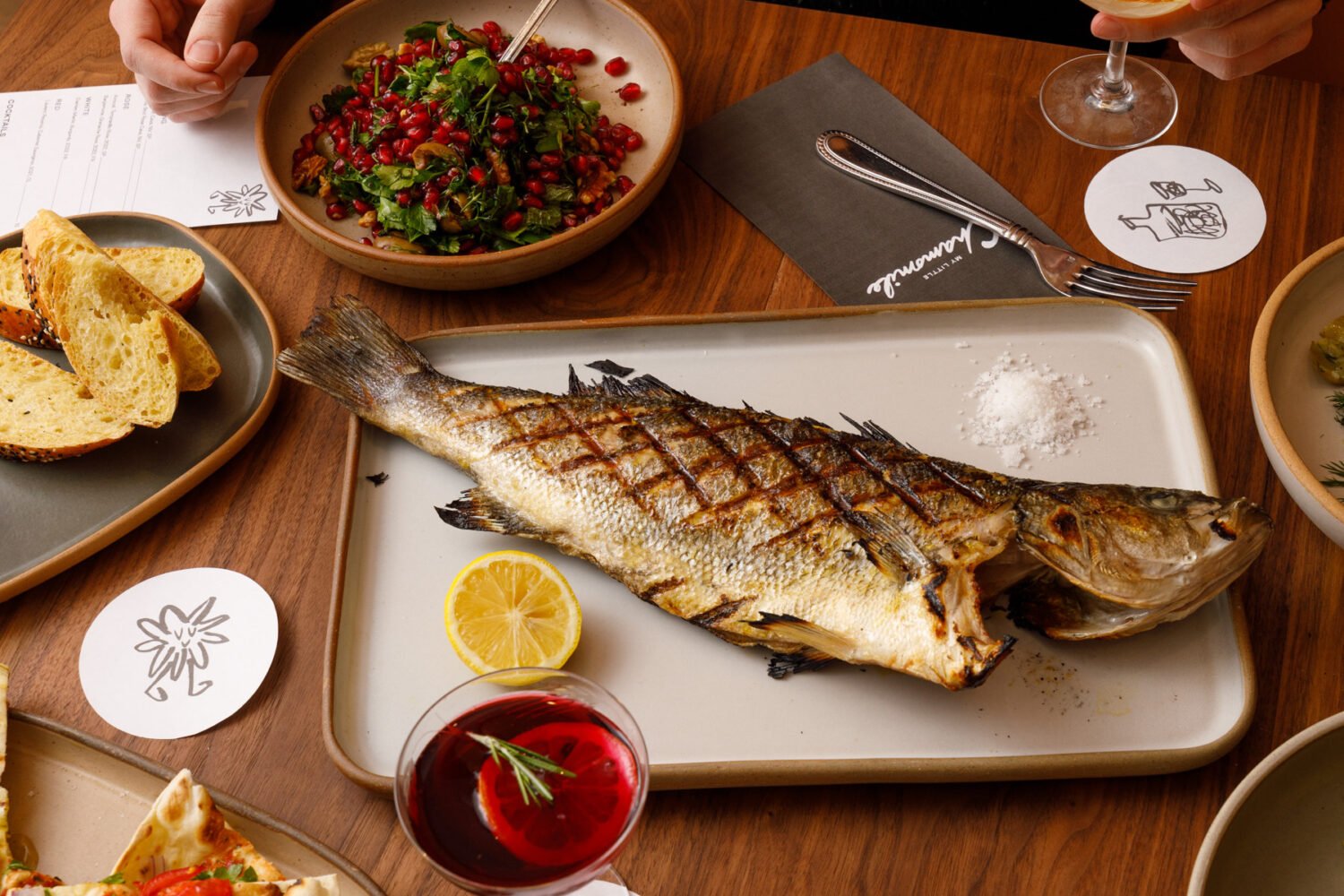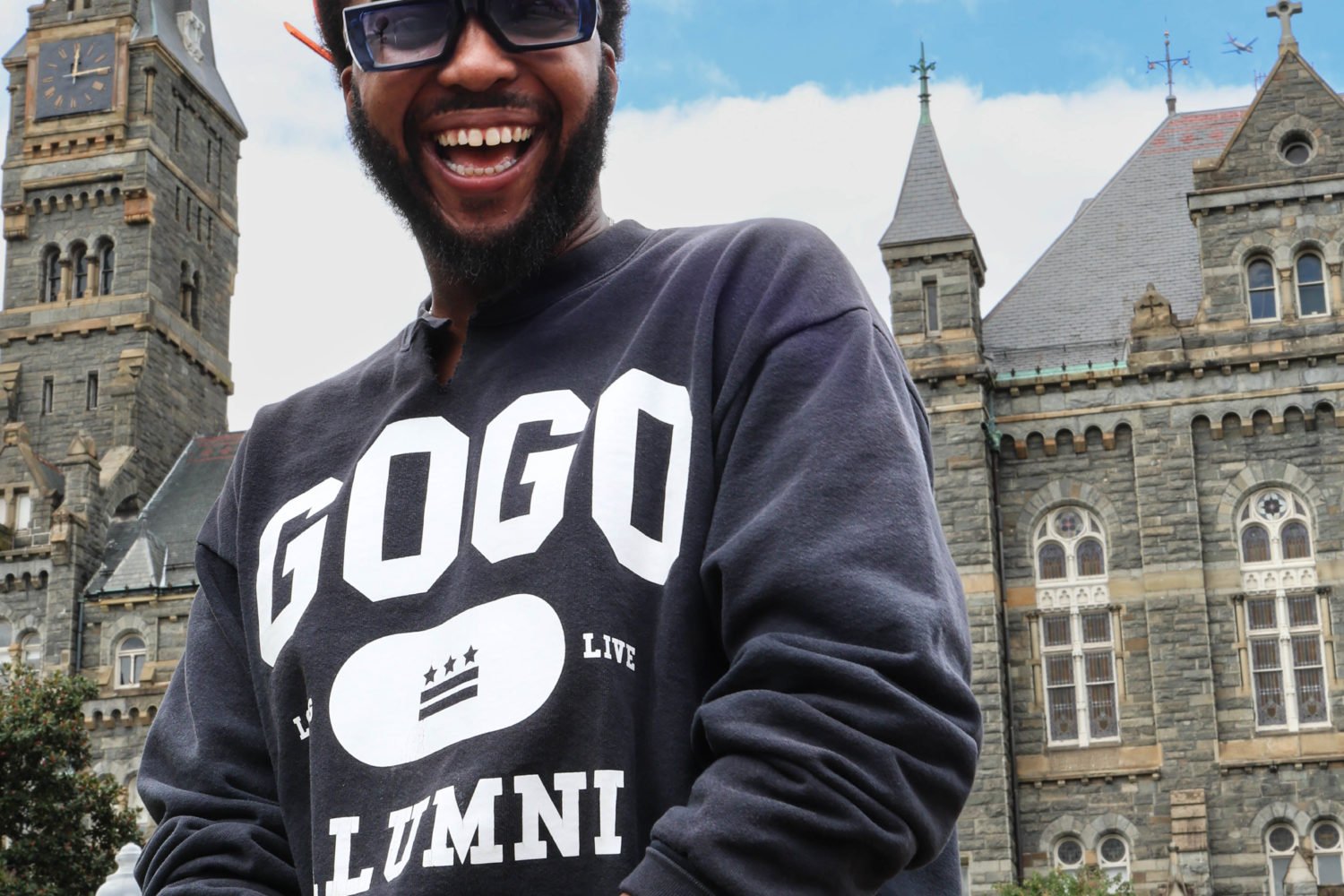The facts were these and only these, so read them carefully: New York’s Finest caught Hawkins, a burly Marine on leave, darting down 42nd Street. The cops had been looking for the man who shot the owner of a local pizzeria, and though Hawkins insisted he had never stepped foot in Pasquale’s, he otherwise fit the description. “You were innocent, but you ran?” Inspector Winters asked when he arrived on the scene.
“This fat guy wearing a white apron and chef’s hat comes charging at me. He’s waving a butcher knife and he’s screaming, ‘He shot the boss!’ ” Hawkins said, sounding almost annoyed. “So I ran.”
“Then what?”
“I went back to the restaurant with the cop, and a couple of customers said I might be the Marine who held up the place. They weren’t sure.”
Wanting a second opinion on the case, Winters phoned an old colleague, Dr. Haledjian, and told him what I just told you. Nothing more.
“Hawkins is your man,” Haledjian assured him. “No mistake about it!”
The question, reader, is this—how did Haledjian know?
Ginger Flesher-Sonnier is laughing. She’s laughing not because I’ve stumped her with the Case of the Angry Chef and she’s stalling for time to sieve the cold, hard facts from the red herrings, but because I somehow thought I could stump her with a stupid, facile puzzle by the author of Encyclopedia Brown—a mystery so simple that a child could probably solve it. (I, a 34-year-old adult, did not solve it.)
“Oh, yeah, Hawkins did it,” she says. “I thought it might have something to do with the chef’s apron. You know when they give a weird detail to watch out.” (I did not know.) “But it’s ‘He went back to the restaurant.’ Back.”
Flesher-Sonnier’s right. She’s also right when I present the Case of the Attempted Murder. And the Case of the Blackmailer. I’ve been trying to stump her for months, but it’s impossible. “I’ve seen every darn puzzle in the world, I feel like,” she says, which I guess makes sense if you’re the owner and CEO of a ludicrously profitable chain of escape rooms.
You’ve probably heard of them—these adult funhouses where you pay to be trapped inside a series of rooms, each separated from the next by a locked door. The aim is to solve puzzles to find the key that opens the door to the next puzzle, then the next puzzle, until no puzzles are left and you’re finally back where you started (that is, no longer trapped). It’s a logic puzzle that you’re stuck inside, an M.C. Escher lithograph brought to life.
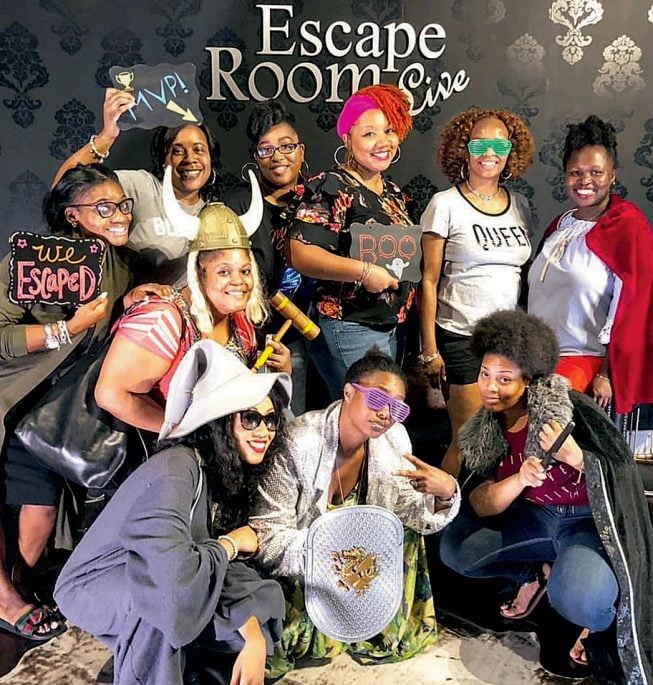 Photograph courtesy of Escape Room Live.
Photograph courtesy of Escape Room Live. Photograph courtesy of Escape Room Live.
Photograph courtesy of Escape Room Live.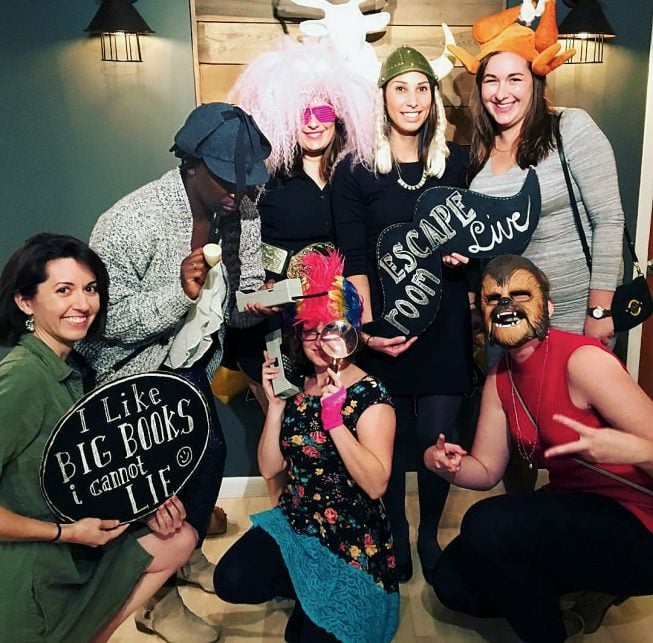 Photograph courtesy of Escape Room Live.
Photograph courtesy of Escape Room Live.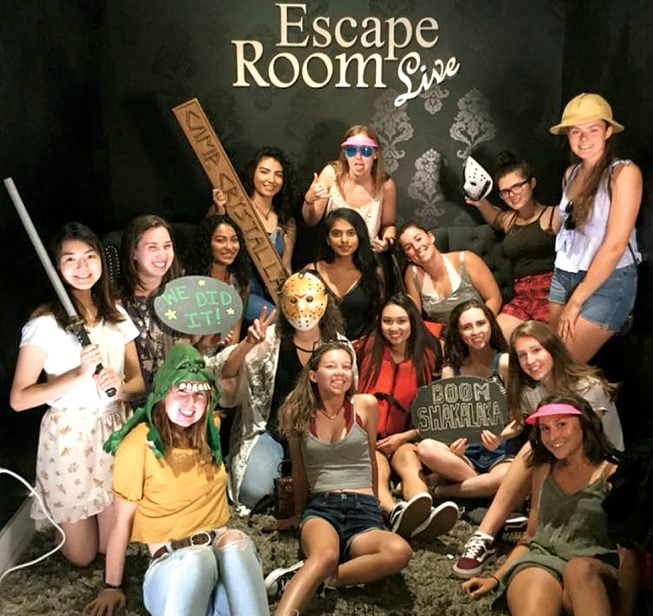 Photograph courtesy of Escape Room Live.
Photograph courtesy of Escape Room Live.Ropes courses and trust falls are out. Besides the puzzle freaks who spend their own money at Ginger Flesher-Sonnier’s escape rooms, law firms, tech companies, and three-letter agencies are all sending employees to bond in them, too. Photographs courtesy of Escape Room Live.
Flesher-Sonnier’s empire was born in DC and today has nine themed rooms, across Georgetown and Alexandria. She doesn’t just make escape rooms, though. She makes the Disney World of escape rooms—escape rooms that look like Hollywood film sets. Take her “Titanic” room, which cost $100,000 to build. You and your “fellow passengers” (formerly known as “friends” or “coworkers” or, in my case, strangers who signed up for the same time slot) start in a period-specific stateroom with damask-upholstered walls, a velvet divan, and a candlestick telephone. The closet is stocked with vintage clothes and luggage. A “porthole” shows video of the rising water level and the Titanic’s pitiful rescue flares almost imperceptible above the iceberg. The message is clear: We will have to save ourselves.
To do that, we search for clues to solve puzzles to open the stateroom door. For example, how to align the boarding passes hidden throughout the suite to crack the code that unlocks the drawer that contains the Heart of the Ocean, which I immediately fasten around my neck. (This delays things because it’s the solution to the next puzzle and not merely a costume prop.) While the real Titanic took hours to sink, you and your fellow passengers—who will ideally gel to become teammates and, as Flesher-Sonnier insists sometimes happens, people who grab a drink together afterward—have only 45 minutes to make it to a lifeboat.
She makes the Disney World of escape rooms—rooms that look like Hollywood sets. Her “Titanic” room cost $100,000 to build.
She didn’t invent the escape room, but she did transform it, like a fairy godmother, from a roadside novelty into the golden carriage of live-action entertainment. And in a town whose adult population suffers from an overdeveloped sense of competition twinned with a puerile sense of entertainment—kickball leagues, senators staging snowball fights, how you felt about solving/not solving the Case of the Angry Chef—it seems to be working. Five years ago, Flesher-Sonnier was a high-school math teacher. Now the 50-year-old owns some of the highest-grossing escape rooms in the country.
“She has vision that no one in the market had before her,” says Marty Parker, an industry vet who has run 19 escape-room locations. “Ginger makes it a steakhouse. Let’s make it the Grand Hilton, let’s make it the Mirage on the Strip.” He calls it “sprinkling Ginger dust.”
By the time Parker met Flesher-Sonnier—on a panel at an escape-room trade show in St. Louis—she was “already legendary in the industry,” as he puts it, in part because she’d starred in an episode of West Texas Investors Club, a CNBC knockoff of Shark Tank hosted by oil tycoons Wayne “Butch” Gilliam and Mike “Rooster” McConaughey (yes, relation—he’s Matthew’s older brother). “The guys,” as she calls them, loved her. “Look at this pretty thing I picked up,” announced Gil, their sidekick, walking into the shot with Flesher-Sonnier by his side. The guys loved her manner—friendly, fun. And they really loved how she had pocketed $1.2 million in just 15 months of operation, with no debt and no partners. (You did? asked Rooster, cigarillo dangling from his lower lip.)
Flesher-Sonnier built an escape room specifically for them, a Blazing Saddles affair with rusty, old-timey jail cells and lassos and beer. They were terrible at escaping. They liked it anyway and offered her $800,000 for half of her business—a low-ball bid that literally made her cough into her koozie-covered beer. But she talked the guys down to a 40-percent share and accepted, at least for the purposes of television.
“Immediately after, I contacted the guys and I’m like, ‘Oh, no, dude. We’re not taking that deal. That’s crazy,’ ” she tells me, despite having signed a contract saying she wouldn’t tell anyone. She doesn’t regret walking away. In fact, she has shooed off deals with other would-be partners, most recently a bigtime entertainment investor with stakes in the LA Dodgers and the A24 film-production company. “It doesn’t work, because I would lose control,” says Flesher-Sonnier, who believes the key to her brand is that she refuses to let it be watered down, to let that Ginger dust be washed away.
“What if they wanted to put us in strip malls?”
Ginger Flesher-Sonnier doesn’t do strip malls. She planted her flagship in Georgetown, right on M Street. In the lobby, she tucks her legs underneath her on a black-leather chesterfield sofa while I take the tufted armchair under the antler chandelier. There are mirrored tables and a silvery shag carpet. Portraits of animals dressed in human clothes from days of yore—an owl with a quiver of arrows on his back, an ibex in Guinevere robes, a Cavalier King Charles spaniel in the regimentals of David’s “Napoleon in His Study”—hang from black walls. It’s like a goth-glam, steampunk cabin. It’s like Artemus Gordon and Morticia Addams teamed up to flip a high-end hunting lodge.
Flesher-Sonnier did the decorating herself but ran the scheme by her sister beforehand. “And she’s like, ‘What the hell?’ She’s like, ‘That’s going to be—that’s stupid. It doesn’t have a style.’ ” (Despite her rural Pennsylvania roots, Flesher-Sonnier talks with a Valley girl’s reliance on like.)
She went ahead with the design anyway because she has the keenest sense of what works for her. Trusting her gut is what got her to Washington in the first place.
In 2013, Flesher-Sonnier moved here, unapologetically, for a man. She had been teaching for almost 20 years—most recently at Ashley Hall, a swanky Charleston girls’ school whose leading light was Barbara Bush, class of ’43—when she met Darren Sonnier, a retired Green Beret. Intelligence work drew Darren to Washington, and Darren, in turn, drew Ginger.
Almost as soon as they moved into their Old Town rowhouse, Darren’s job started dragging him to places she couldn’t follow, like Africa and Afghanistan. She tried her hand at real estate while he was gone but wasn’t getting anywhere. So in May 2014, when Darren booked a three-month gig in Stuttgart, Ginger tagged along. She’d spend her weekdays planning their weekend jaunts, scouring TripAdvisor in particular. “These escape rooms kept coming up,” she says. This is how quickly a life can change: a whirlwind romance, a foreign job posting, an internet search result.
The first escape room she ever did was in Prague the morning after she and Darren got married. “We showed up and the kid running it was late, and we had to go through these locked gates to get into the building,” says Flesher-Sonnier, who was so eager to have a good time that she started scanning the doorway for clues. “We thought this was part of it!”
It wasn’t. But when the kid finally showed up, the spy-themed room reawakened a love for logic games Flesher-Sonnier had had as a ten-year-old, devouring puzzle books in the back seat of the family Bu-ick: “I was addicted to them.” Soon, forking over euros to get trapped in “disgusting”—as in unclean, unattractive—rooms became a fixture on the couple’s itineraries. “You would walk in and be terrified for your life,” says Flesher-Sonnier, who is dramatic in the way of a teacher desperate to keep teenagers interested in finding the cosine.
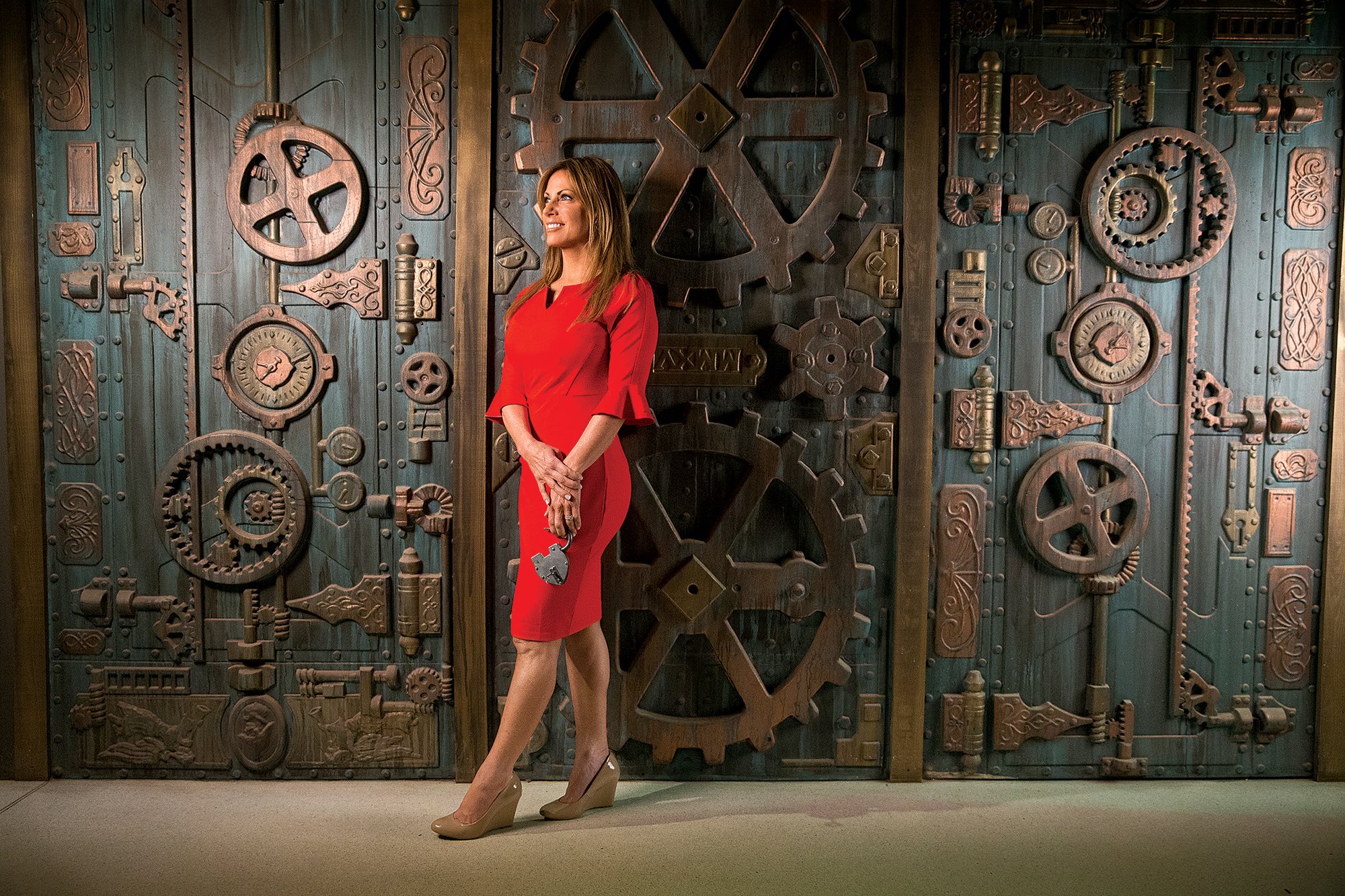
Like so many cool, bizarre artifacts of pop culture, escape rooms originated in Japan but had barely begun to migrate to America. Although Flesher-Sonnier had never figured herself an entrepreneur, “I was like, ‘Oh, my gosh, I can do this so much better.’ And it seems like something that’s so much fun. And I can make it pretty.” Darren agreed. “He’s like, ‘You can Gingerize this.’ ” Before they came home to Washington, she had set up a website, social-media accounts, even the LLC for Escape Room Live.
She plunged $20,000 of their newlywed savings into setting up her first espionage-themed room in Glover Park in 2014—Double Agent’s Digs. Within months, she spent another $260,000 and signed a lease for a second location, in Old Town, frantically designing new puzzles, getting Darren to retrofit props she bought off Wayfair. Soon Darren would quit his job to work full-time for what would become the Ginger Companies. On LinkedIn, he now describes his “Assistant to the Owner” responsibilities as follows: “Support the most amazing woman in the world in anyway she needs!!!”
Flesher-Sonnier is immediately likable, so much so that her first two customers volunteered to stick around after they finished and help her reset the puzzles. They became her first employees, and recently she was invited to attend one’s wedding. “It’s super-cute,” she says. With her bouncy hair and wrap dresses, she still vibes more prep-school teacher than steely businesswoman. (The few times she asks to go off-record are to deliver the mildest insults you’ve ever heard.)
Yet she has fortified her position as the reigning queen of puzzles and escapes. According to bloggers David and Lisa Spira, who track the industry closely, there were only 22 escape-room companies nationwide in 2014, the year Flesher-Sonnier opened. Now there are more than 2,000, and one market study determined that Washington has the second-highest density among US states.Her rooms grossed about $4 million in 2017, with 145,000 customers coming through the door. She says a competitor who operates in eight cities and offered to acquire her last year told her that her “numbers blew everyone’s away by far.” “They said we do at least triple what even their own venues do.”
Why did this fad hit DC so hard?
Long gone are the days when Ginger and Darren were enough to plan, build, and run the business. Now her puzzles are designed by a professional puzzle consultant who has designed puzzle hunts around the country. (By day, he’s a government-contracting executive.) Today, Escape Room Live has some 50 employees.
“My whole family was like, ‘Gosh, she’s throwing her money away,’ ” says Flesher-Sonnier, remembering that first $20,000 investment. “Now it’s worth millions and millions!”
Intuition is still integral to Flesher-Sonnier’s business model. For example, she knows a room has been designed to perfection when it meets her “59:59 rule,” when beta-testing groups are either escaping in the nick of time—just a second left on the clock—or leaving with the feeling that they would have escaped if only they’d been given a single minute more.
Technically, there is a lifeline. In every Escape Room Live, a game master is monitoring play from a control room, and you can radio him or her for hints. But let’s be clear: The price of seeking help is excruciating—it means exclusion from the leaderboard of fastest escape times and, ergo, a cutting sense of personal defeat.
HR departments at some of the most venerable acronyms in Washington—FBI, NIH, AARP, PBS, NPR—are treating the rooms like the next iteration of ropes courses and trust falls, turning to Flesher-Sonnier for team-building jaunts. This past summer, the World Bank, the staff of Senator Patty Murray, and summer associates from Dechert were on her eclectic corporate-client list. So were Booz Allen Hamilton and Google.
But when I hung out at Escape Room Live doing rooms with people who spend their own $28 there on the weekends, wondering why this fad hit DC with the subtlety of the Stay Puft Marshmallow Man in Flesher-Sonnier’s Ghostbusters room (you and your fellow parapsychologists have to capture him to save the city), what stood out was something oh-so-very-Washington: a bare-faced desire to win that was well disguised in the lobby—where everyone was drinking and insisting, “I’m so bad at stuff like this”—but blinding once the doors shut behind us. Megan, a twentysomething accountant and my fellow passenger on the Titanic, all but ripped the Heart of the Ocean from my throat when she realized it actually was a clue (fair enough). In Runaway Subway—in which you’re stuck on a hijacked train—a journalist friend I’d invited shushed another player’s nine-year-old son so she could better read the clues to defuse the bomb. She shushed him, and we perished in the explosion anyway.
Is it fun? Totally—I mean, when you win.
“My whole family was like, ‘Gosh, she’s throwing her money away.’ Now it’s worth millions and millions!”
When I ask Flesher-Sonnier why she thinks Washington is wild for escape rooms, she says the competitive profile that this city attracts is part of it. The other part is more universal to being a human in 2018, and more elemental. Like, a way to put down your iPhone and revive the easy-won joys of childhood. “I think a lot of it has to do with how urban everybody is right now,” she says, M Street traffic at a crawl in the window beside us. “We’re very disconnected from nature and our primal selves. This is sort of a release of that, and you can actually get into something physical.”
Naturally, the next leisure pursuit she’s Gingerizing is axe-throwing. She went on a scouting trip to see the new playgrounds where you consume alcoholic beverages while throwing very sharp axes, and she wasn’t impressed: “They were all in warehouses, and it was just plywood central.” Kick Axe Throwing, the Ginger Companies version, is already open in Brooklyn and coming soon to Philadelphia and Washington. Think “wintry lodge” surroundings, she says—with tartans and taxidermy and cute pillows with bears on them. Next year, you’ll probably be Ubering to Ivy City to check out her Throw Social, which will offer curling and “footbowl,” in which players throw footballs at bowling pins. There will also be a drinking game called “stump,” in which players take turns hammering nails into a tree stump. She didn’t invent these games, either, but now you’ll play them in the back yard of her dreams. Think “a retro 1950’s vibe,” with vintage folding lawn chairs and metal gliders, “like your grandmom’s house.”
The hardest part of expanding the Ginger Companies hasn’t been coming up with new ideas—Flesher-Sonnier is tuned in to how adults want to play because she’s her own ideal customer: “Who am I trying to appeal to? I’m like, Me.” And Me loves games, loves fun, loves immersion. But Me also loves perfection, which has made delegating tough. “I wish I could clone myself,” Me says.
But that’s one puzzle Flesher-Sonnier has yet to solve. So back in the Gingerized Georgetown lobby, surrounded by all the things she picked because Me loved them, she’s getting ready to interview job applicants. Some may recognize her from TV. “When I go to the conventions, too, it’s so funny,” she says. “They’re all like, ‘Oh, you were our inspiration for opening.’ And I’m like”—she takes a dramatic beat—“sorry!”
Flesher-Sonnier is probably right to apologize. Escape rooms are just a trend, like laser tag and paintball and a hundred other things we loved doing until we basically forgot about them. Escape rooms probably won’t even build a better team. But for her, they were a solution she’d been working toward without knowing it. Meeting Darren unlocked a new life in a new town. Real estate was a red herring, but she picked up fresh clues in Europe. “Some chick needs to get in there and make this pretty,” she realized, stumbling through that first escape room. So she opened the next door for herself, and we all walked in.
This article appears in the October 2018 issue of Washingtonian.
